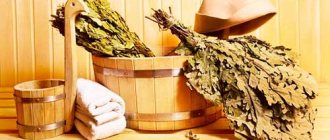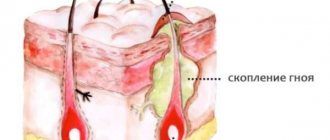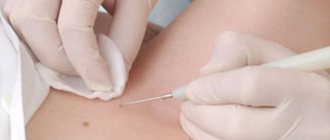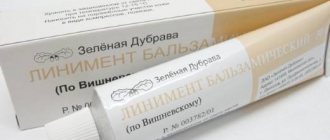A furuncle or boil is a purulent inflammation of the hair follicle, which is caused by Staphylococcus aureus. Nowadays, many people suffer from this disease and wonder: is it possible to swim and go to the sauna with a boil? Experts disagree, but we can say that bathing in the bath and visiting the sauna is undesirable.
There is no strict ban on bathing procedures for boils, but you should be careful when the formation comes into contact with water.
Features of the course of furunculosis
Furunculosis is a disease of the hair follicles, in which a purulent-inflammatory formation, a boil, appears on the human body. Occurs due to the proliferation of staphylococcal infection. Bacteria enter damaged tissues from the external environment through household items. Chiri can form on:
- nose;
- eyes;
- neck;
- head;
- back;
- lower back;
- buttocks;
- legs;
- groin area;
- ears;
- armpits.
The appearance of an internal boil is a painful process. A rapidly increasing subcutaneous compaction forms on the damaged area. The size of the abscess reaches several centimeters in diameter. When the boil matures, a purulent head appears in the center of the lump, through which the contents of the boil will come out. The process is accompanied by redness of the skin, swelling, and local hyperthermia. About 10 days pass from the appearance of the first signs to the start of the recovery period.
There are 3 stages of the disease:
- Infiltration.
- Purulent-necrotic.
- Healing.
Is it possible to swim with a boil: is it allowed to visit the bathhouse?
Popularly, this disease is called a boil or boil - these are pus-filled cavities in the skin.
In medical terms, it is an inflammation of the hair follicle, nearby sebaceous gland and connective tissue.
There is such a remedy as honey cake for boils. What is it, and what is needed to prepare it?
The recipe for such a flatbread is very simple; in order to prepare the flatbread you only need 100 grams of honey and 100 grams of flour. For increased effect, you can also add 100 grams of grated laundry soap.
Soap and honey need to be melted, you can do this in a water bath, after which all three ingredients need to be mixed. When mixed, you should get a dough-like mass.
From this you will make a cake. Don't worry, it won't stick to your hands or clothes.
You can use honey cake on any part of the body. Thanks to it, the boil matures faster.
What are the character symptoms for such a disease?
Before a boil or boil ripens, a person goes through several stages, differing in symptoms. Development on the body begins with the appearance of a hard infiltrate on the skin, which is accompanied by redness of the skin, and pressing on the infiltrate causes pain.
As the infiltrate increases, the person experiences increased redness and pain when pressed, and swelling appears around the affected area.
After 2-3 days, the boil looks like a cone, and a pustular core forms in the center, which ends on the surface of the skin with a small bubble of pus. The size of the pimple reaches 3 centimeters. This stage of development is sometimes accompanied by fever up to 38 degrees and symptoms of intoxication. The skin around the formation takes on a characteristic glow, pain is constantly present.
At the last stage, the superficial vesicle is opened, followed by the release of pus and blood to the surface. Following the pus, a necrotic plug emerges.
After the boil comes out, the skin swelling decreases and the pain effect is significantly reduced. A scar forms at the site of the breakthrough within 2-3 days, which completely disappears after a while, although sometimes it remains forever and cosmetic procedures are used to get rid of the scar.
READ MORE: How often can children take antibiotics?
The development of chiria lasts for 10 days.
5 Ointments for treating boils
Patients who are faced with furunculosis should follow simple rules that will help reduce inflammation in the shortest possible time and reduce the likelihood of complications. Let's look at the principles in more detail:
- It is forbidden to squeeze out boils on your own, no matter what area of the body they affect. It is most dangerous to squeeze out boils when they are located on the neck, eyes, groin and pubic area.
- Do not resort to self-medication by prescribing medications and folk remedies. Traditional medicine is rich in recipes for curing boils, but only a specialist can prescribe the correct therapy, which will avoid any complications.
- Use medications and strictly follow the doctor’s recommendations until the boils are completely cured, since furunculosis often develops into a chronic form and new boils form one after another.
Drug therapy
For a person who has encountered a boil between the buttocks, the urgent question is how to treat it in order to alleviate his condition as quickly as possible.
The therapeutic effect for boils on the buttock can be caused by exposure to ultraviolet rays. The duration of treatment for a boil on the butt is determined by the doctor, but as medical practice shows, the result is noticeable after 1-3 sessions. It all depends on the degree of neglect of the disease.
Is it possible to heat a boil and will the heat be harmful for such a pathology? Warming up helps speed up the process of boil ripening, but resorting to such a procedure is permissible only after consultation with doctors.
If there is no opportunity to receive qualified medical care, traditional medicine will help get rid of a boil on the butt. For an abscess on the tailbone, treatment at home involves the use of various ointments and lotions.
You can apply a bandage with Vishnevsky ointment or Levomekol to the place where the boil appears. It must be secured on top with adhesive tape.
The dressing must be changed at least once every 24 hours; if purulent contents begin to be released, the procedure can be repeated more often. Each time you change the application, the wound should be treated with hydrogen peroxide or chlorhexidine.
When the purulent contents are completely released, such procedures are no longer necessary. The wound is lubricated with brilliant green or iodine until it heals.
At the initial stage of development of a boil on the butt, treatment can be reduced to the use of iodine alone. To treat the inflamed area, a cotton swab is moistened in a 5% iodine solution.
What ointments are best to use?
Ointment for treating boils is a very good remedy. The most effective and fast-acting drug at the moment is Vishnevsky ointment. What are its advantages over other creams and gels?
READ MORE: What can you take for thrush during pregnancy?
The sooner you start using Vishnevsky ointment, the sooner you will feel good again.
Overview of General Recommendations
Boils, despite the apparent simplicity of the symptoms, are a dangerous formation. Boils often cause meningitis or sepsis. Due to non-compliance with the rules, a person endangers his own health and life. Carefully following the recommendations of doctors allows you to protect a person from the development of dangerous consequences.
Hygiene
The most important part of prevention and treatment is maintaining hygiene standards and proper care. A person who takes care of his own hygiene is rarely exposed to boils. Once an abscess has formed, keeping it clean is the key to successful and effective treatment.
After the appearance of boils, a person must stock up on individual household items. This includes towels, washcloths, clothing, combs, scissors, and razors. It is better to wash your body with your own soap; the risk of spreading an infectious pathogen is high. If the formation appears on a person’s face, it is important that the cosmetics remain personal.
Consider the need to regularly change underwear and bed linen, and wear clean clothes. Avoid tight synthetic items and give preference to lightweight natural fabrics.
Eliminate daily bathing if possible. If you wet a boil frequently, you can injure it. Water is a good spreader of infection. You can wash yourself by washing the abscess with warm water without unnecessary touching. You need to take a bath without cosmetic additives - salt, foam.
The issue of warming up is controversial. Some argue that this is an acceptable procedure, others are categorically against it. The relevance of warming up is determined by the stage at which the boil is located. You can heat a purulent boil at the stage of swelling and during the healing period. Dry heat, a common method, is effective in accelerating the maturation of the abscess and regeneration of the skin. Ultraviolet lamps are used. During the phase of filling with pus, heating the boil, much less steaming it, is strictly prohibited. Heat improves blood circulation, provoking the opening of a bladder with pus. The danger lies in the possibility that the boil can open inside, after which the infection spreads through the blood. Heat will intensify the symptoms - swelling will increase, pain will become severe.
Going to the sauna, swimming pool, or bathhouse with a boil is prohibited. They combine two undesirable factors - water and heat. If, under the influence of high temperature, the boil bursts (outward), the pus will spread, and the site of damage will become an “open gate” for bacteria to enter. It is better to avoid trips to the sea. Salt water “corrodes” the tissues of the abscess.
Physical activity
Physical activity is a necessary component for maintaining the health of the human body. When a boil appears on the body, the question arises about the relevance of sports.
If a person exercises regularly and systematically, it will be difficult to stop exercising. Classes are allowed in the first stage of furunculosis. As soon as the chiryak becomes full of pus, you should avoid physical activity. Associated with sweating, stretching of the skin due to movements, and a high risk of injury. If the boil bursts while playing sports, there is a risk of spreading the infection and introducing a new one into the open crater. In most cases, a person will not be able to play sports with a mature boil, as this will increase symptoms.
Having sex with furunculosis remains a sensitive issue. If an abscess has formed in the groin area or on the buttock, physical and emotional discomfort appears. A person cannot fully relax if purulent inflammation is in the intimate area. The process is accompanied by pain, which does not have the best effect on the quality of sex. As with sports, it is best to adhere to restrictions for the period from filling until the wound heals.
With furunculosis, doctors advise resting, staying warm, and eating well. At the infiltration stage, it is permissible to warm the boil with ichthyol ointment or Vishnevsky. Before using ointments, you should treat the skin around the abscess with a bandage, which should be moistened with antiseptic solutions. Do not use “colored” solutions, which may interfere with the assessment of the site of inflammation.
Is it possible to heat a boil, why can’t you go to the bathhouse, treatment methods
A furuncle (popularly boil) is a tubercle on the scalp of the skin, inside of which pus accumulates. Appears due to the entry of white or golden staphylococci into the hair follicle. Treatment of boils or furunculosis is not recommended at home. Squeezing or heating a chir, especially on the face, can end in disaster.
Heating a boil can have unpleasant consequences
Furunculosis and boils
Furunculosis has a scientific name that reflects the essence of the disease - it is staphyloderma. It is characterized by the appearance of multiple boils on the skin. They can be localized in one place or dispersed throughout the body. You can't joke with a boil.
Single boils often appear on the back of the neck, back of the head, back (especially on the shoulder blades), shoulders, armpits, arms and legs. Boils are widespread on the face, in the area of the nasolabial triangle.
These parts of the body have developed hair and sebaceous glands are actively working.
There is only one reason for the development of a boil - bacteria, most often staphylococci, enter and multiply in the area of the hair follicle.
How does the inflammatory process develop?
- The forces of the immune system rush to the site of infection, and leukocytes and macrophages penetrate there. These are special cells that eat foreign microorganisms.
- The inflammatory process begins.
- A hollow tubercle appears on the skin. It is red in color, and the skin around the boil is also red.
- Gradually, the top of the boil becomes white. This indicates that pus is accumulating inside the cavity. Pus is a cloudy liquid substance consisting of “dead” white blood cells and killed microorganisms.
- The inflammation ends with the opening of a mature boil and the release of pus. Boils need to be opened surgically, without waiting for an abscess.
Treatment of furunculosis and single boils is carried out strictly under the supervision of a doctor.
The boil is red in color with a white tip
Causes of skin infection
Staphylococci, fungi and other microorganisms live on the skin and sebaceous glands of any healthy person. Normally they do no harm. Under certain conditions, bacteria begin to actively multiply and affect different layers of the skin, causing inflammation.
Factors contributing to the appearance of boils:
- Contaminated skin. Failure to comply with hygiene rules favors the proliferation of staphylococci.
- Constant rubbing of the skin by clothing. This is typical for the neck and armpit area. Tight clothing injures the skin, compromising its protective properties. Staphylococci get inside, and inflammation begins.
- Skin contact with chemicals. Chemical burns damage the skin and promote infection.
- Mechanical damage to the skin - cuts, abrasions.
- Weakening of the immune system. The body does not fight the pathogenic microflora of the skin, the infection develops and penetrates deeper. Immunity is reduced due to colds, diabetes, chronic alcoholism, and stress.
Improper treatment of a boil, squeezing and opening at home, can cause blood poisoning. A squeezed boil on the face can cause meningitis, an inflammation of the brain. The face shares blood flow with the brain.
https://www.youtube.com/watch?v=HA7okWvhfL4
Staphylococci multiply quickly in poor hygiene conditions
How does the disease progress?
Boils develop only on the scalp, they never appear on the soles and palms. When microorganisms enter the hair follicle, a small hump appears on the skin surface. It can be treated with alcohol or salicylic acid, then suppuration can be avoided.
On the fourth or fifth day, pus begins to form inside the hump. During this time, the boil increases in size and becomes painful on palpation. Often with furunculosis, body temperature rises, weakness appears and appetite decreases. The boil may ooze blood mixed with pus.
As soon as a boil appears, you need to go to the surgeon. Boils on the nose or ear are treated by an otolaryngologist (ENT). The doctor determines the depth of the inflammatory process and the volume of pus. Mature abscesses can only be opened in a clinical setting.
In addition to surgical treatment, antibiotics, local remedies (ointments or herbal tinctures) and vitamin complexes are prescribed to improve immunity.
What is prohibited when treating a boil
Boils seem to be commonplace to some; they are treated with traditional methods without discerning what is useful and what is harmful. Few people know whether it is possible to go to the bathhouse with a boil, wet it with water or warm it.
When a boil appears, it is strictly prohibited:
- Treat the sore spot with brilliant green, iodine or fucorcin. Dying substances will prevent the doctor from determining the exact amount of suppuration and the depth of inflammation.
- Squeeze out boils with your fingers and nails. By applying incorrect pressure, you can inject pus into the skin layers and into the bloodstream. This can cause an abscess. Squeezing boils on the face leads to the development of inflammation in the brain, which can result in death.
- Open ulcers with sharp improvised objects, even if they have been treated with an antiseptic. Household treatment will not completely disinfect the item, which will lead to additional infection.
- Take antibiotics on your own. Antibiotics are one of the components of the treatment of boils. But you can take them only after a doctor’s prescription and under his supervision.
- Apply non-sterile bandages to the opened abscess.
- Steam in the sauna and take a hot bath.
- Warm boils on your face with a blue lamp.
- Wet the opened boil with water.
Compliance with these recommendations will make the doctor’s work easier and help avoid complications and undesirable consequences.
Fukortsin is not used to treat boils
Why you can’t heat boils
Heat relieves pain and spasms, dilates blood vessels, improves blood flow to organs and tissues. Heating pads and taking a warm bath help with back pain, and the steam room helps with respiratory diseases. But heating boils is dangerous.
Heating will improve blood circulation in the area of inflammation, its symptoms will become more pronounced, and the outbreak will spread to healthy areas. High temperature can contribute to the opening of the abscess and blood poisoning.
It is not recommended to use a blue lamp for boils. This is an excellent and time-tested remedy for treating respiratory diseases, but it is not suitable for furunculosis.
When consulting a doctor, you should ask whether it is possible to wet the boil. Hygiene of the inflammation site is important. If the boil is not yet ripe, then it can be wetted with lukewarm water and gently washed with soap. Opened boils should not be wetted; a new infection may be introduced.
Traditional methods of treating boils
Traditional medicine has in its arsenal many means that help in the fight against boils. They should be used with caution and after consultation with a doctor.
Brewer's yeast
Sold in pharmacies, used strictly according to instructions. Helps improve metabolism and body resistance.
Pure yellow sulfur
Can be bought at a pharmacy. Take orally at the tip of a knife for several days in a row. Sulfur helps cleanse the blood.
Pure yellow sulfur is applied internally
Plantain leaves
The plant can only be collected in a clean place, away from the road and enterprises. Wash the plantain leaf well, mash it in your hand and apply it to the boil.
Aloe
Cut a leaf from the plant, wash it, and cut it with a clean knife. Apply the pulp of the leaf to the boil and wrap it for several hours.
Calendula tincture or tea
Taken orally to enhance the immune system. Calendula lotions help relieve symptoms of inflammation and speed up the process of boil ripening.
Honey cakes
They are made from rye flour, honey and milk. Apply to boils to speed up ripening.
All folk remedies are available to everyone. You can use them for boils after consulting a doctor. If allergy symptoms appear after using the product, you should stop treatment immediately.
You can make a boil cake from honey and flour
Ointments for the treatment of boils
To treat furunculosis, antibiotics and local agents in the form of ointments are used. They help reduce the focus of inflammation, reduce the pain of symptoms, accelerate the maturation of ulcers and facilitate wound healing after opening.
There are three types of ointments for treating boils:
- antibacterial,
- pulling,
- healing.
Antibiotic ointments are used to treat boils on the face, ears or nose. They kill bacteria and cleanse the inflammatory focus from pus. The most popular and accessible remedies are Levomekol, Tetracycline and Oflocaine.
Pulling ointments are used in the early stages of inflammation. They stimulate the formation of the head of the boil - pustule. The abscess opens faster. Do not squeeze out pus with your fingers. The most commonly used are Ichthyol ointment, Heparin and Syntomycin.
Healing agents are used at the end of treatment to restore the integrity of tissues and metabolic processes in them. The most popular remedies are Vishnevsky ointment and zinc ointment.
Vishenevsky ointment is a universal remedy. It has antibacterial, anti-inflammatory and healing properties, softens the walls of the abscess after opening and stimulates skin healing without the formation of compactions.
Any ointments can be used only after consultation with a doctor and in combination with immunostimulating agents.
Uncontrolled treatment of boils and improper behavior can lead to serious consequences. The danger of diseases cannot be downplayed. Only professional medical help can get rid of boils forever.
Loading…
Source: https://kazandoctor.ru/kozhnye-zabolevaniya/pochemu-chirej-nelzya-progrevat
What events are strictly prohibited?
Furunculosis has enough restrictions regarding human behavior during the period of the disease. Doctors strictly prohibit:
- treat boils during the period of infiltration with coloring solutions - iodine, brilliant green, fucarcin;
- open, puncture ulcers;
- massage the area around the abscess;
- swimming in public places;
- wet a mature abscess;
- steam in baths, saunas;
- sunbathe in solariums;
- combine staying in the bathroom with children;
- treat abscesses with cosmetics;
- for eye furunculosis, use decorative cosmetics;
- independently select a treatment package;
- warm ripened boils;
- wear tight clothing if the abscess is located on the legs or groin;
- apply wet compresses;
- use tight bandages.
The main rule that dermatologists call for is that you should not try to open a boil yourself. This will lead to the spread of staphylococcal infection through the tissues, the formation of new foci of purulent inflammation or damage to internal organs and death of the patient.
People with purulent formations are advised to avoid heavy physical labor, work in contaminated premises, and on land. It is advisable to limit contact with animals and sources of bacteria.
Treatment of boils involves a thorough examination of the patient’s body. Independent attempts to cure furunculosis, especially if antibiotic therapy is used, will lead to a worsening of the condition.
Causes of skin infection
Staphylococci, fungi and other microorganisms live on the skin and sebaceous glands of any healthy person. Normally they do no harm. Under certain conditions, bacteria begin to actively multiply and affect different layers of the skin, causing inflammation.
Factors contributing to the appearance of boils:
- Contaminated skin. Failure to comply with hygiene rules favors the proliferation of staphylococci.
- Constant rubbing of the skin by clothing. This is typical for the neck and armpit area. Tight clothing injures the skin, compromising its protective properties. Staphylococci get inside, and inflammation begins.
- Skin contact with chemicals. Chemical burns damage the skin and promote infection.
- Mechanical damage to the skin - cuts, abrasions.
- Weakening of the immune system. The body does not fight the pathogenic microflora of the skin, the infection develops and penetrates deeper. Immunity is reduced due to colds, diabetes, chronic alcoholism, and stress.
Improper treatment of a boil - squeezing and opening at home - can cause blood poisoning. A squeezed boil on the face can cause meningitis, an inflammation of the brain. The face shares blood flow with the brain.
Recommendations of an immunologist for furunculosis
Formations on the skin are closely related to a decrease in the protective function of the immune system. Maintaining immunity is a key link in disease prevention. A balanced diet, a moderately active lifestyle, and the absence of bad habits have a beneficial effect on the immune system and the condition of the skin. You need to remember about the local immune protection of the skin. Following the rules of hygiene will prevent the appearance of boils.
Do not delay the treatment of purulent abscesses. Natural defenses cannot independently resist infection. It is important to support her with appropriate medications. Do this solely on the basis of a diagnostic examination and consultation with an immunologist, dermatologist and infectious disease specialist. Modern immunology strongly recommends that patients with furunculosis consult a doctor at the first symptoms of illness.
Furunculosis is a disease in which it is important to take a responsible approach to the treatment process.
In order not to harm the body, it is advisable to consult a doctor before starting a health activity. An experienced specialist can advise effective methods of therapy. The article has been verified by the editors
How to speed up the ripening of boils
The faster the boil matures, the sooner the purulent contents will come out and the process of skin regeneration will begin. You can speed up the maturation of boils using a number of medications and folk remedies.
It is best to ask your doctor what to do to make the boil ripen faster. To speed up this process, the following ointments are usually prescribed:
A universal remedy is ichthyol ointment. This drug contains healing resins and sulfur, due to which it has an antiseptic and astringent effect.
As a rule, glycerin and petroleum jelly are used as auxiliary components of the drug, which ensures softening of the skin. The ointment is very effective at the early stage of abscess development. It significantly speeds up this process, promoting the rapid accumulation of pus and the bursting of the boil. Thanks to the sulfur in the composition, an analgesic effect is provided. The emollient components of the product have a beneficial effect on the skin, as a result, the breaking of the boil is painless.
This ointment is applied to the inflamed area under a compress. The frequency of treatment of the abscess depends on its size and stage of maturation. As a rule, the ointment is applied twice a day.
Heparin cream or ointment also has antiseptic and emollient properties. This remedy actively fights bacteria and is well absorbed into the blood due to its vasodilating effect. The drug is applied either directly to the boil or under a gauze compress. The frequency of skin treatment and treatment regimen are selected individually by the doctor. The main property of this medicine is its analgesic and anti-inflammatory effect, due to which discomfort is reduced after the first application of the ointment to the boil. Heparin ointment can be used at any stage of boil maturation.
One of the most delicate drugs is synthomycin ointment. It effectively softens the skin thanks to the oils in its composition, which helps relieve discomfort. The drug has an antiseptic effect and accelerates the process of pus coming to the surface of the skin. Due to the oils in the composition, breaking through a boil is practically not accompanied by unpleasant sensations. After the abscess breaks through, the ointment can be continued to be used until signs of inflammation completely disappear, as it dries the wounds well and helps accelerate regeneration. The drug is applied with clean hands directly to the inflamed area of the skin; in case of extensive damage, it is recommended to use compresses with ointment.
It should be remembered that boils should never be rubbed. You should not pierce them or try to squeeze them out yourself. If the ointment is applied to an abscess, it is important not to rub the drug.
When an immature boil is damaged, the purulent contents do not come to the surface of the skin, but enter directly into the blood. This can cause infection of the entire body.
To treat ulcers, your doctor may recommend medications containing an antibiotic. They are used for profuse rashes, in case of risk of infection of the whole body, as well as for the treatment of particularly large boils. Popular and effective antibiotic ointments containing:
- Levomekol;
- tetracycline cream or ointment;
- Oflokain gel.
Non-operative impact
When it comes to removing suppuration, there is no single miracle cure, since the approach to ridding a person of pathology is largely determined by the stage of development of the inflammatory process, the location of the abscess and other factors.
Removal of a boil is possible both conservatively and surgically. If there are many abscesses, then local treatment will not be beneficial and patients are also prescribed general antibacterial drugs. Also, when treating boils, it is worth considering that they can appear again and again. Most often this occurs from incomplete removal of the boil capsule, which is the source of the abscess. The slightest provoking factor will be enough for suppuration to reappear.
The choice of treatment method remains with the doctor, who will consider the most comfortable and acceptable method for treating furunculosis for the patient.
stye, boils | Children | Children's health
- Girls who have experienced it, stye began to appear in younger children at the age of three. He is now six years old. At first it happened a couple of times a year - in the off-season, when I had a cold. Then they became more frequent. Later boils appeared, one even had to be cut out under general anesthesia. This summer, for complete happiness, purulent pyoderma began. We visited all possible and impossible doctors - blood tests for sugar, everything was donated. Now we are being examined by an immunologist - while the doctor does not say anything for sure, he ordered additional tests. Maybe someone has come across where to run, what to do??? It only gets worse with age, next year I have to go to school...
- The children didn’t have any, but I had: barley, boils and what is called a “wolf’s udder”: a bunch of boils in the armpit for a year. She was saved by a blood transfusion from a vein into the buttock. I don’t know if this is possible for children, the doctor prescribed it to me
- Thanks for the information, I’ll take it into account when I talk to the doctor again. How old were you then?
- I, not the children, had it. Puberty started before I was about 20 years old, probably. And this and that, and the wolf's udder too. I treated her with homeopathy - something like sulfur-iodine-6, as it was called, but it didn’t help. Then she scored it, treated it locally - barley - cauterized the white dot with iodine (don’t do this to a child!!! It hurt like crazy!) - abscesses - with levomekol. It passed after a shock course of antibiotics, injected for a gynecological reason. It was a 12-day course of 12 injections per day, I don’t remember what exactly, but they started hallucinating for me. Actually, all the abscesses have disappeared, I hope, forever.
- Thanks. We tried homeopathy - to no avail, although the homeopath is very good, she always helped me. They also drank and injected antibiotics - they gave pus for culture with sensitivity. "And nothing has changed"…
- From the age of 10 until I was 17 years old, I constantly had boils, no matter what they did to me with them - they opened them, pierced them, UV irradiation, pills and nothing helped, at the age of 17 I cut them off and for 20 years now I haven’t had one
- In general, doctors tell me that it happens in children and will go away with age, but in mine it only gets worse with age. At first there were only barleys, then boils began, and this summer also purulent pyoderma - all the children swam and sunbathed, and we walked around with cotton wool and were treated.
- As I understand you, I also suffered, it’s summer, it’s hot, everyone is swimming in the river, I’m sitting alone on the bank like damn
- ((It would be better if I sat, you know how I feel sorry for him... We went to the sea, the water temperature is 30 degrees, and we all walk around with cotton wool, pumping out pus... The worst thing is that I really don’t know who to turn to anymore - the feeling that everything imaginable -We have already passed unthinkable tests, and next year we have to go to school. A couple of weeks ago, a huge boil on my leg was cured - the pus went away for three days - they did constant dressings...
- Isn’t it possible to swim in the sea? It seems that sea salt water should help cleanse wounds... I always soaked my purulent wounds in salt water... Maybe, on the contrary, I should soak it in the Dead or Red Sea?
- What kind of bathing can there be when, for example, the boil has opened and pus is actively draining from it? There, tampons must be constantly changed so that the pus comes out and everything is sterile.
- I had from 10 to 14 years old, I had blood transfusions, homeopathy (it helped 1 time out of 5), brewer's yeast, an antibiotic really helped, my mother decided to give me an antibiotic after 4 years of suffering, since she was averse to antibiotics, as a result, very deep scars from boils are still on you (I had 3-4 heads from the boil, harbuncles are called harbuncles). it’s terrible... in school, during lessons, the parts of my body where these boils were ached and broke out... it was hell
- Tell me, how did you choose the antibiotic? Have you taken a pus test for sensitivity or using the “poke method”?
- Good afternoon My youngest had severe recurrent furunculosis + styes came out periodically. I caught it from her too. The immunologist prescribed Timalin injections to us. After that the ttt was not repeated.
- Hello, colleague)) Tell me, did you have an immunogram done by an immunologist? We did it - for now she prescribed us Viferon suppositories (insert now), plus she ordered us to get tested for infections (CMV, mononucleosis, herpes, etc.) against the background of the suppositories, then she will think about it. In general, we are now being examined by an immunologist.
- We took a bunch of tests - nothing special was found, but this infection kept coming out. We took antibiotics and immunomodulators, but I was afraid to give injections. One of the immunologists recommended Timalin. I first tested it on myself, then (when once again this nasty thing came out of my daughter’s nose) I did it to my daughter (she was 1.5 at the time). We had nothing to lose. You already have a child bigger than mine, you can also serve children’s brewer’s yeast. But you need to drink them for a long time - at least a month - to see results.
- Thanks for the information! We drank yeast at the very beginning, when we only had barley.
- So sea water draws out the pus. what kind of sterility is there in a boil?))))) I once came to the Mediterranean Sea, the day before I cut my finger on a scalpel that was used to open an abscess on a cat. There, in two days, I didn’t develop an abscess, an abscess, the surgeon cleaned it up, of course, but said that we were gradually moving towards phlegmon and amputation. In short, in three (THREE!) days in Turlyak my finger completely healed. I wouldn’t have believed it in my life if it weren’t my finger, I saw it with my own eyes...
- Please. Get well @@@@@
- Sea water itself is, of course, useful in this regard, but the place of the boil is usually fixed with a bandage (arm or leg), when swimming, the bandage falls off, the purulent wound remains open, the child comes out of the sea onto the sand... Should I re-bandage it on the beach? No, with these things, until all the pus comes out, it’s better on the shore...
- My immunity dropped. I had this for 2 years after giving birth, my immunity dropped significantly. I've never had styes before
- Maybe... Why did you suddenly fall? How to lift? My son eats well, walks a lot, gets all his vitamins, lives at the dacha from April to September, drinks fresh milk and everything fresh from the gardens, from the age of three he goes to the sea for a month every year... What else can be done?
- Well, yes. When I got out of the water, they quickly put on a bandage with cotton wool inside and Levomekol. I don’t know, it seems to me that there is more infection inside the boil than in the sand on the beach... But, in any case, this is a tactic. And you need to decide the question of strategy - WHY is this infection... Did you do a blood culture? It cannot be that there are no staphylococci.
- swimming (even in the sea) with boils is prohibited, there is a huge chance of infection and then “hello” sepis, purulent sinusitis, meningitis (if the boil is in the nose or ear), the place where the boil is located hurts terribly, swelling, any touch causes pain, The temperature may also rise, there is definitely no time for swimming here
- When the pus comes out, a cotton swab is not with levomekol, but with ointments that draw out the pus - levomekol is applied later, when the wound is clean of pus. Cultures were done, antibiotics were taken...
- Well, somehow I’m also not a supporter of swimming during an acute purulent process, then, he’s not the only one swimming in the sea, people, excuse me, pee there... Our seas are not so clean that with purulent open wounds there...
- I had furunculosis while I was breastfeeding. I took Augmentin (antibiotics), they helped temporarily, then they came back again. Only a course of Imunofan (10 injections) helped. I think the child also needs some kind of immunomodulator (prescribed by a doctor), otherwise I can’t imagine how the child can tolerate this.
- Thanks for the story, but we took antibiotics more than once... They even injected me when they opened a boil in the hospital.
- Imunofan is not an antibiotic, but an immunomodulator. I just think that antibiotics in this case only help temporarily; you need some kind of immunomodulator with a doctor’s prescription. By the way, my younger sister also had furunculosis as a child. And at that time I myself became more alert in treating her this way: every day I carefully examined the body, and as soon as I found a tiny red boil that was beginning to ripen, I “cleaned” it, having first disinfected everything. And she smeared the area with cologne and some kind of disinfectant ointment (I don’t remember which one). This way you can prevent ripening. You can also lubricate the body with chlorophyllipt solution. But the main thing, I think, is to choose an immunomodulator.
Source: https://eva.ru/kids/messages-2528272.htm
Special forms of boils and their consequences
There are some types of boils that require special attention from doctors. These include ulcers located on the nose, under the eyes on the cheeks, in the area of the nasolabial folds and upper lip. This localization is characterized by severe pain when talking, chewing, and facial movements. Patients are often bothered by headaches, a feeling of weakness, and fever. Only after opening the boil does the patient’s well-being improve.
Furuncle on the face
Dangerous of developing severe complications. In this anatomical area, a network of lymphatic and venous vessels is developed, into which pathogenic microorganisms enter from the source of inflammation. The inflammatory process also begins there - thrombophlebitis. With the flow of venous blood, the infection enters the venous sinuses (extensions) of the dura mater. Thrombosis of the sinuses occurs, and purulent meningitis occurs - inflammation of the meninges.
This complication is accompanied by rapidly increasing swelling of the face, in which compacted painful veins can be felt, fever, and deterioration of the general condition. Subsequently, vision and consciousness are impaired, and stiffness of the neck muscles appears. If medical assistance is not provided at this time, the patient may die.
Abscess boil
A condition in which purulent inflammation spreads to the surrounding skin with its necrosis and the formation of extensive ulcers - abscesses. The process is accompanied by a deterioration in general condition, fever, thinning of the skin, and the appearance of foci of fluctuation under the skin. Such inflammation is also fraught with the development of complications.
furunculosis (multiple ulcers);
lymphangitis and lymphadenitis (inflammation of lymphatic vessels and nodes);
thrombophlebitis (blockage and inflammation of the veins);
phlegmon and soft tissue abscess (extensive purulent melting);
sepsis and metastatic abscesses (microbes enter the blood and form purulent foci in other organs).
Without medical intervention, such diseases can lead to sepsis (blood poisoning) and an unfavorable outcome.
Ways of infection with herpes
A patient becomes infected with herpes, as a rule, through close contact with a carrier of the virus. In most cases, it is passed from parent to child. This can occur during a relapse of the disease in a mother who is breastfeeding her baby. As a rule, young mothers after childbirth try to follow diets, which often lead to vitamin deficiencies.
- through household means (through shared dishes, food, toys, clothes);
- airborne when there is a person with an active stage of the disease in a group or among others;
- at birth from the mother.
It is worth noting that the high risk of infecting a baby is during lactation, birth and pregnancy. Pregnant women who have never had herpes and become infected for the first time during pregnancy have the risk of giving birth to a baby with some pathology and herpetic disease. A recurrence of the disease in the mother is also dangerous for the baby in the womb.
Most often, a child can pick up the virus in kindergarten, since all the conditions for the spread of the disease are present there: shared toys, cabinets, dishes. All this can provoke illness in a child with weak immunity. It is worth noting that no one forbids going to kindergarten with herpes, which is often neglected by many parents.











